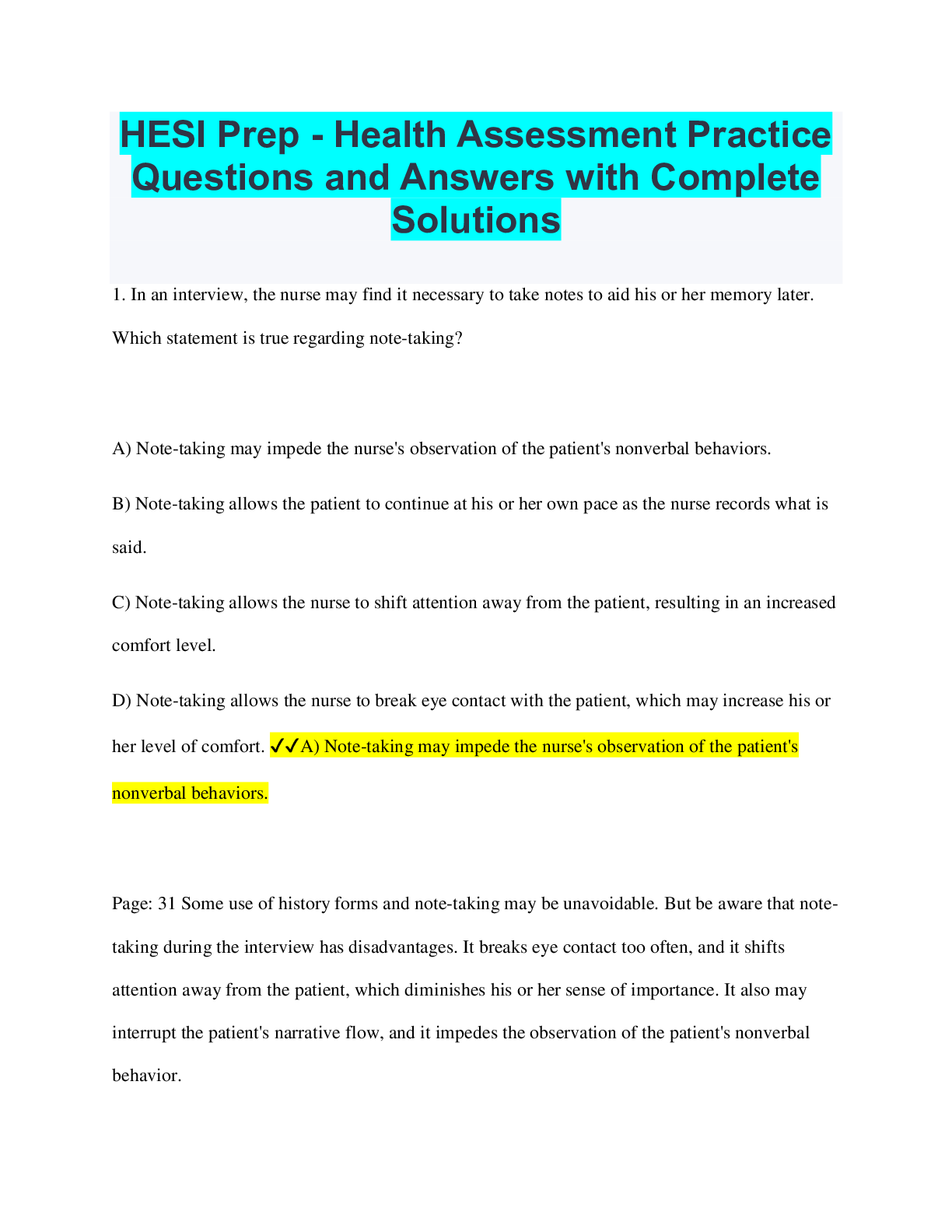*NURSING > EXAM REVIEW > Saunders Medsurg Skin Integumentary Question and Answers with Rationale Revised 2019 Study Guide (All)
Saunders Medsurg Skin Integumentary Question and Answers with Rationale Revised 2019 Study Guide
Document Content and Description Below
1. A client calls the emergency department and tells the nurse that he came directly into contact with poison ivy shrubs. The client tells the nurse that he cannot see anything on the skin and asks th... e nurse what to do. The nurse should make which response? 1. "Come to the emergency department." 2. "Apply calamine lotion immediately to the exposed skin areas." 3. "Take a shower immediately, lathering and rinsing several times." 4. "It is not necessary to do anything if you cannot see anything on your skin." Answer: 3. "Take a shower immediately, lathering and rinsing several times." Rationale: When an individual comes in contact with a poison ivy plant, the sap from the plant forms an invisible film on the human skin. The client should be instructed to cleanse the area by showering immediately and to lather the skin several times and rinse each time in running water. Removing the poison ivy sap will decrease the likelihood of irritation. Calamine lotion may be one product recommended for use if dermatitis develops. The client does not need to be seen in the emergency department at this time. 2. A client is being admitted to the hospital for treatment of acute cellulitis of the lower left leg. During the admission assessment, the nurse expects to note which finding? 1. An inflammation of the epidermis only 2. A skin infection of the dermis and underlying hypodermis 3. An acute superficial infection of the dermis and lymphatics 4. An epidermal and lymphatic infection caused by Staphylococcus Answer: 2. A skin infection of the dermis and underlying hypodermis Rationale: Cellulitis is an infection of the dermis and underlying hypodermis that results in a deep red erythema without sharp borders and spreads widely throughout tissue spaces. The skin is erythematous, edematous, tender, and sometimes nodular. Erysipelas is an acute, superficial, rapidly spreading inflammation of the dermis and lymphatics. The infection is not superficial and extends deeper than the epidermis. 3. The clinic nurse assesses the skin of a client with psoriasis after the client has used a new topical treatment for 2 months. The nurse identifies which characteristics as improvement in the manifestations of psoriasis? Select all that apply. 1. Presence of striae 2. Palpable radial pulses 3. Absence of any ecchymosis on the extremities 4. Thinner and decrease in number of reddish papules 5. Scarce amount of silvery-white scaly patches on the arms Answers: 4. Thinner and decrease in number of reddish papules 5. Scarce amount of silvery-white scaly patches on the arms Rationale: Psoriasis skin lesions include thick reddened papules or plaques covered by silvery-white patches. A decrease in the severity of these skin lesions is noted as an improvement. The presence of striae (stretch marks), palpable pulses, or lack of ecchymosis is not related to psoriasis. 4. The clinic nurse notes that the health care provider has documented a diagnosis of herpes zoster (shingles) in the client's chart. Based on an understanding of the cause of this disorder, the nurse determines that this definitive diagnosis was made by which diagnostic test? 1. Positive patch test 2. Positive culture results 3. Abnormal biopsy results 4. Wood's light examination indicative of infection Answer: 2. Positive culture results Rationale: With the classic presentation of herpes zoster, the clinical examination is diagnostic. However, a viral culture of the lesion provides the definitive diagnosis. Herpes zoster (shingles) is caused by a reactivation of the varicella-zoster virus, the virus that causes chickenpox. A patch test is a skin test that involves the administration of an allergen to the surface of the skin to identify specific allergies. A biopsy would provide a cytological examination of tissue. In a Wood's light examination, the skin is viewed under ultraviolet light to identify superficial infections of the skin. 5. A client returns to the clinic for follow-up treatment following a skin biopsy of a suspicious lesion performed 1 week ago. The biopsy report indicates that the lesion is a melanoma. The nurse understands that melanoma has which characteristics? Select all that apply. 1. Lesion is painful to touch. 2. Lesion is highly metastatic. 3. Lesion is a nevus that has changes in color. 4. Skin under the lesion is reddened and warm to touch. 5. Lesion occurs in body area exposed to outdoor sunlight. Answers: 2. Lesion is highly metastatic. 3. Lesion is a nevus that has changes in color. Rationale: Melanomas are pigmented malignant lesions originating in the melanin-producing cells of the epidermis. Melanomas cause changes in a nevus (mole), including color and borders. This skin cancer is highly metastatic, and a person's survival depends on early diagnosis and treatment. Melanomas are not painful or accompanied by sign of inflammation. Although sun exposure increases the risk of melanoma, lesions are most commonly found on the upper back and legs and on the soles and palms of persons with dark skin. 7. A client arriving at the emergency department has experienced frostbite to the right hand. Which finding would the nurse note on assessment of the client's hand? 1. A pink, edematous hand 2. Fiery red skin with edema in the nail beds 3. Black fingertips surrounded by an erythematous rash 4. A white color to the skin, which is insensitive to touch Answer: 4. A white color to the skin, which is insensitive to touch Rationale: Assessment findings in frostbite include a white or blue color; the skin will be hard, cold, and insensitive to touch. As thawing occurs, flushing of the skin, the development of blisters or blebs, or tissue edema appears. Options 1, 2, and 3 are incorrect. 8. The evening nurse reviews the nursing documentation in a client's chart and notes that the day nurse has documented that the client has a stage II pressure ulcer in the sacral area. Which finding would the nurse expect to note on assessment of the client's sacral area? 1. Intact skin 2. Full-thickness skin loss 3. Exposed bone, tendon, or muscle 4. Partial-thickness skin loss of the dermis Answer: 4. Partial-thickness skin loss of the dermis Rationale: In a stage II pressure ulcer, the skin is not intact. Partial-thickness skin loss of the dermis has occurred. It presents as a shallow open ulcer with a red-pink wound bed, without slough. It may also present as an intact or open/ruptured serum-filled blister. The skin is intact in stage I. Full-thickness skin loss occurs in stage III. Exposed bone, tendon, or muscle is present in stage IV. 9. An adult client was burned in an explosion. The burn initially affected the client's entire face (anterior half of the head) and the upper half of the anterior torso, and there were circumferential burns to the lower half of both arms. The client's clothes caught on fire, and the client ran, causing subsequent burn injuries to the posterior surface of the head and the upper half of the posterior torso. Using the rule of nines, what would be the extent of the burn injury? 1. 18% 2. 24% 3. 36% 4. 48% Answer: 3. 36% Rationale: According to the rule of nines, with the initial burn, the anterior half of the head equals 4.5%, the upper half of the anterior torso equals 9%, and the lower half of both arms equals 9%. The subsequent burn included the posterior half of the head, equaling 4.5%, and the upper half of posterior torso, equaling 9%. This totals 36%. 10. The nurse is preparing to care for a burn client scheduled for an escharotomy procedure being performed for a third-degree circumferential arm burn. The nurse understands that which finding is the anticipated therapeutic outcome of the escharotomy? 1. Return of distal pulses 2. Brisk bleeding from the site 3. Decreasing edema formation 4. Formation of granulation tissue Answer: 1. Return of distal pulses Rationale: Escharotomies are performed to relieve the compartment syndrome that can occur when edema forms under nondistensible eschar in a circumferential third-degree burn. The escharotomy releases the tourniquet-like compression around the arm. Escharotomies are performed through avascular eschar to subcutaneous fat. Although bleeding may occur from the site, it is considered a complication rather than an anticipated therapeutic outcome. Usually, direct pressure with a bulky dressing and elevation control the bleeding, but occasionally an artery is damaged and may require ligation. Escharotomy does not affect the formation of edema. Formation of granulation tissue is not the intent of an escharotomy. 11. The nurse is caring for a client who sustained superficial partial-thickness burns on the anterior lower legs and anterior thorax. Which finding does the nurse expect to note during the resuscitation/emergent phase of the burn injury? 1. Decreased heart rate 2. Increased urinary output 3. Increased blood pressure 4. Elevated hematocrit levels Answer: 4. Elevated hematocrit levels Rationale: The resuscitation/emergent phase begins at the time of injury and ends with the restoration of capillary permeability, usually at 48 to 72 hours following the injury. During the resuscitation/emergent phase, the hematocrit level increases to above normal because of hemoconcentration from the large fluid shifts. Hematocrit levels of 50% to 55% (0.50 to 0.55) are expected during the first 24 hours after injury, with return to normal by 36 hours after injury. Initially, blood is shunted away from the kidneys and renal perfusion and glomerular filtration are decreased, resulting in low urine output. The burn client is prone to hypovolemia and the body attempts to compensate by increased pulse rate and lowered blood pressure. Pulse rates are typically higher than normal, and the blood pressure is decreased as a result of the large fluid shifts. 12. The nurse is administering fluids intravenously as prescribed to a client who sustained superficial partial-thickness burn injuries of the back and legs. In evaluating the adequacy of fluid resuscitation, the nurse understands that which assessment would provide the most reliable indicator for determining the adequacy? 1. Vital signs 2. Urine output 3. Mental status 4. Peripheral pulses Answer: 2. Urine output Rationale: Successful or adequate fluid resuscitation in the client is signaled by stable vital signs, adequate urine output, palpable peripheral pulses, and clear sensorium. However, the most reliable indicator for determining adequacy of fluid resuscitation, especially in a client with burns, is the urine output. For an adult, the hourly urine volume should be 30 to 50 mL. 13. The nurse is caring for a client following an autograft and grafting to a burn wound on the right knee. What would the nurse anticipate to be prescribed for the client? 1. Out-of-bed activities 2. Bathroom privileges 3. Immobilizatio ................................................................................................................................continued [Show More]
Last updated: 1 year ago
Preview 1 out of 36 pages

Reviews( 0 )
Document information
Connected school, study & course
About the document
Uploaded On
Dec 08, 2021
Number of pages
36
Written in
Additional information
This document has been written for:
Uploaded
Dec 08, 2021
Downloads
0
Views
51


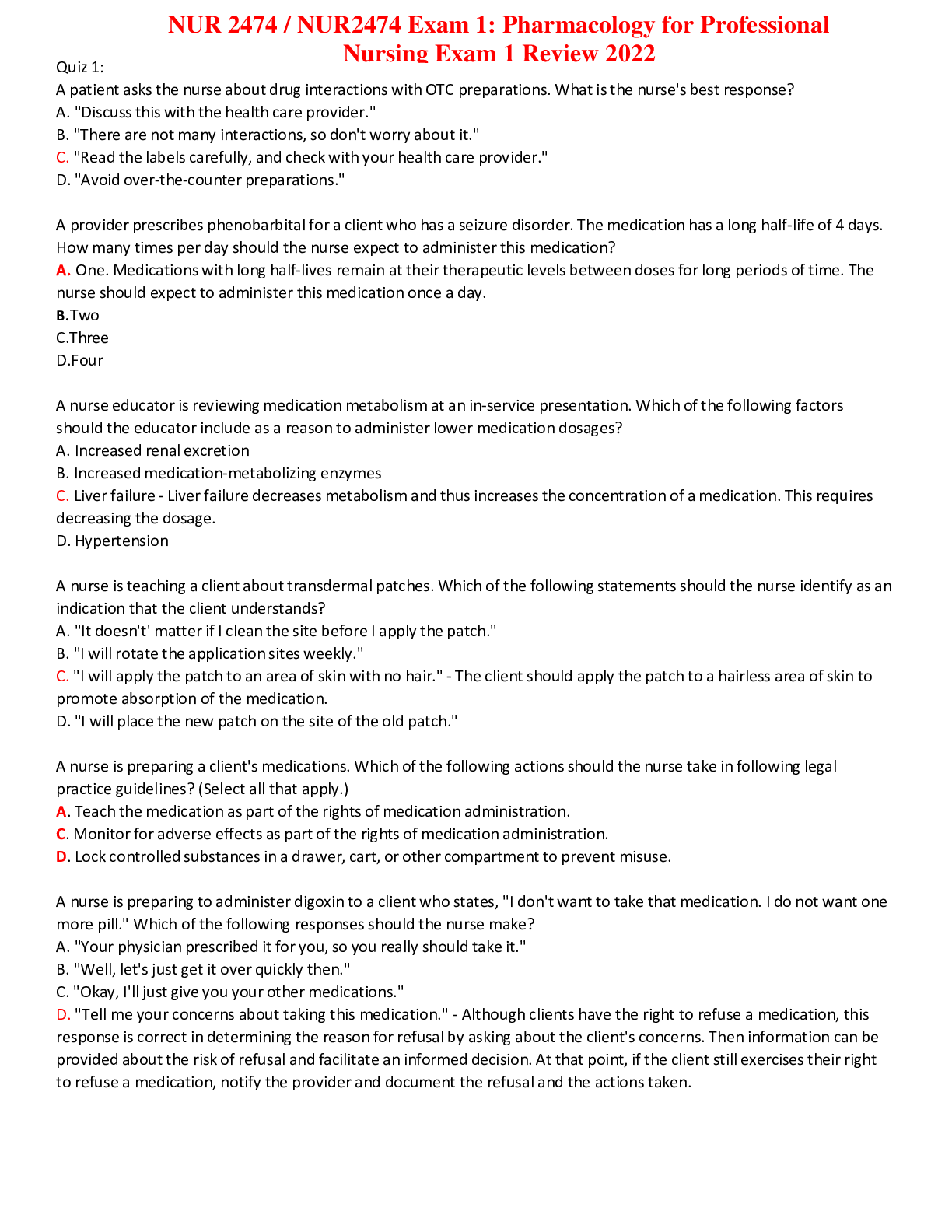

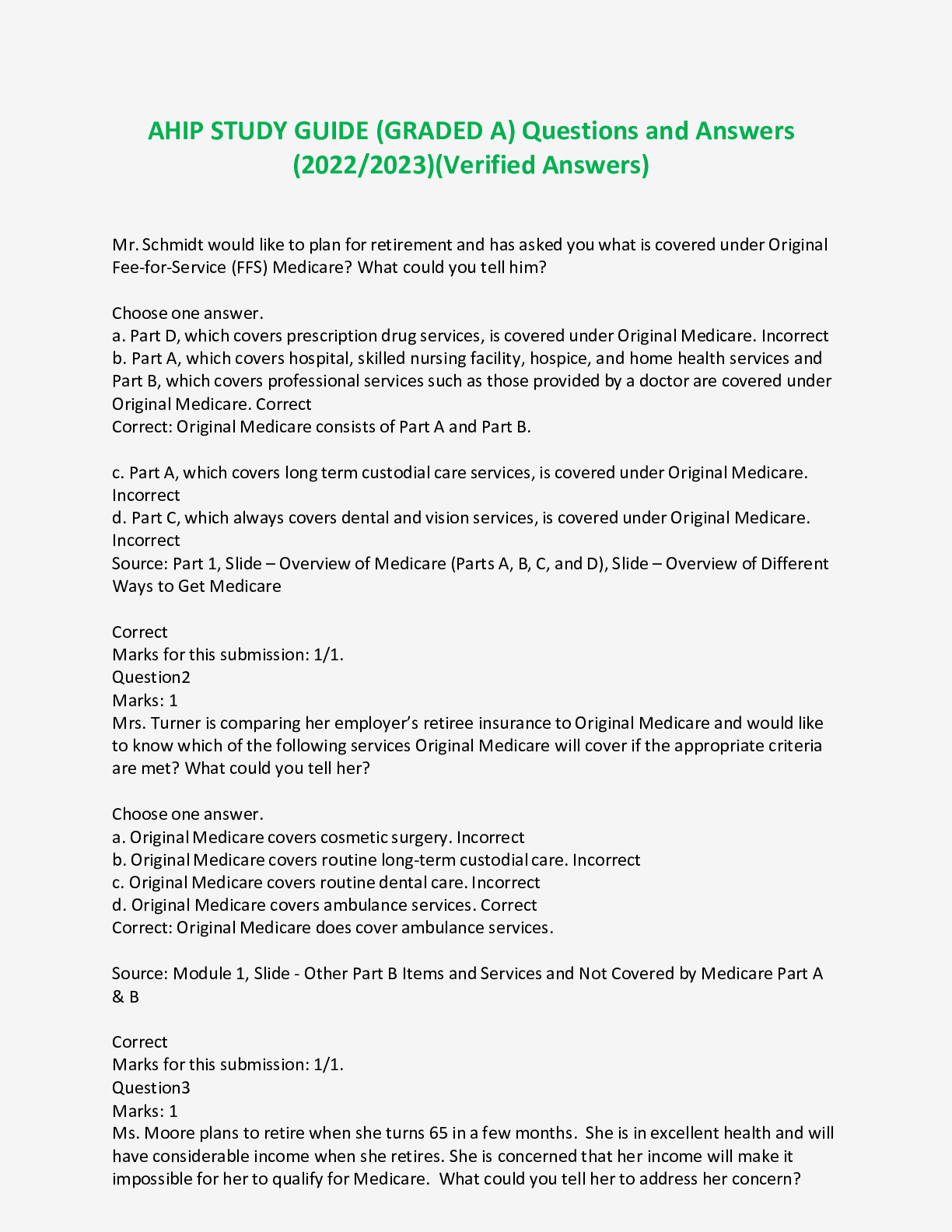

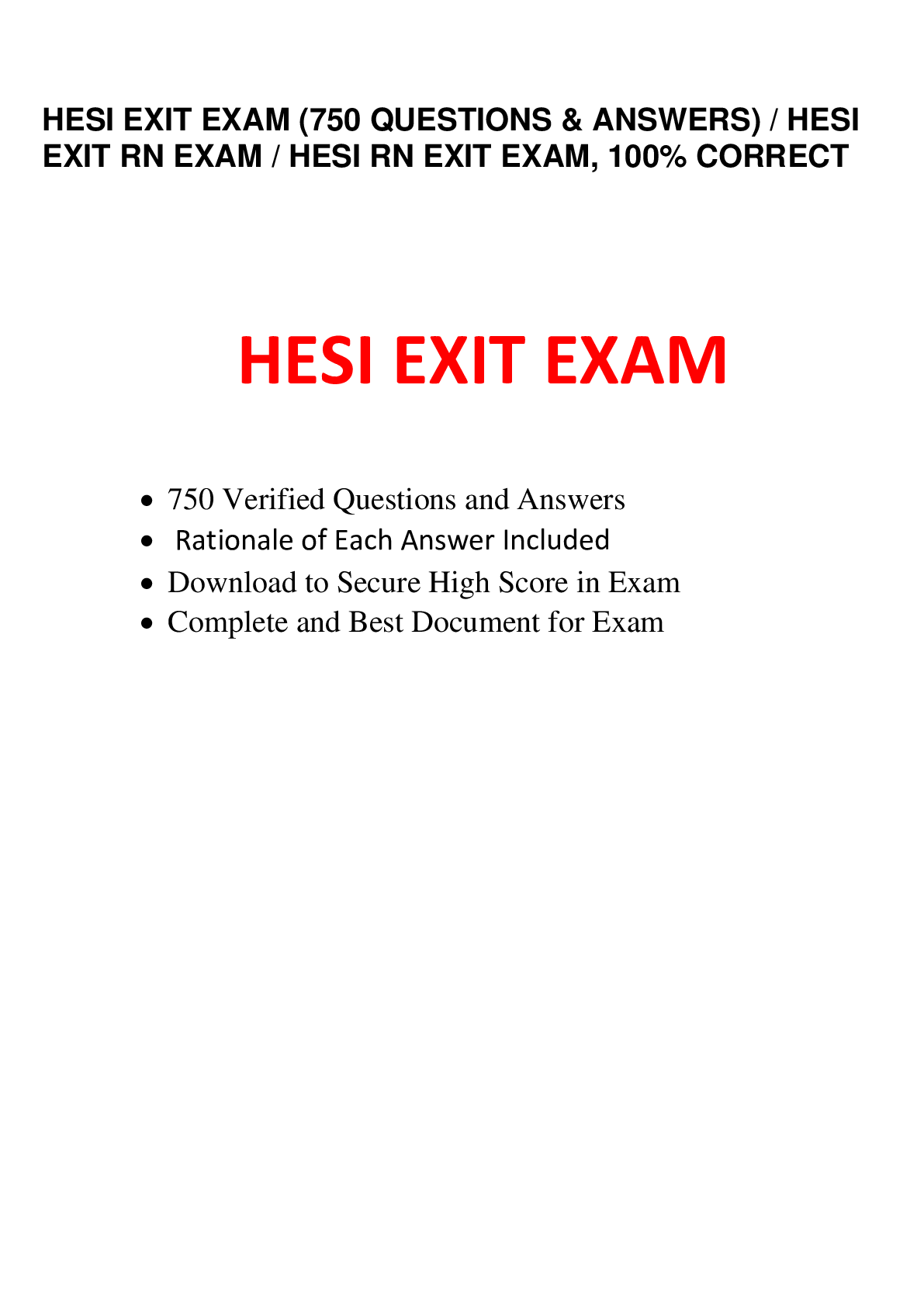

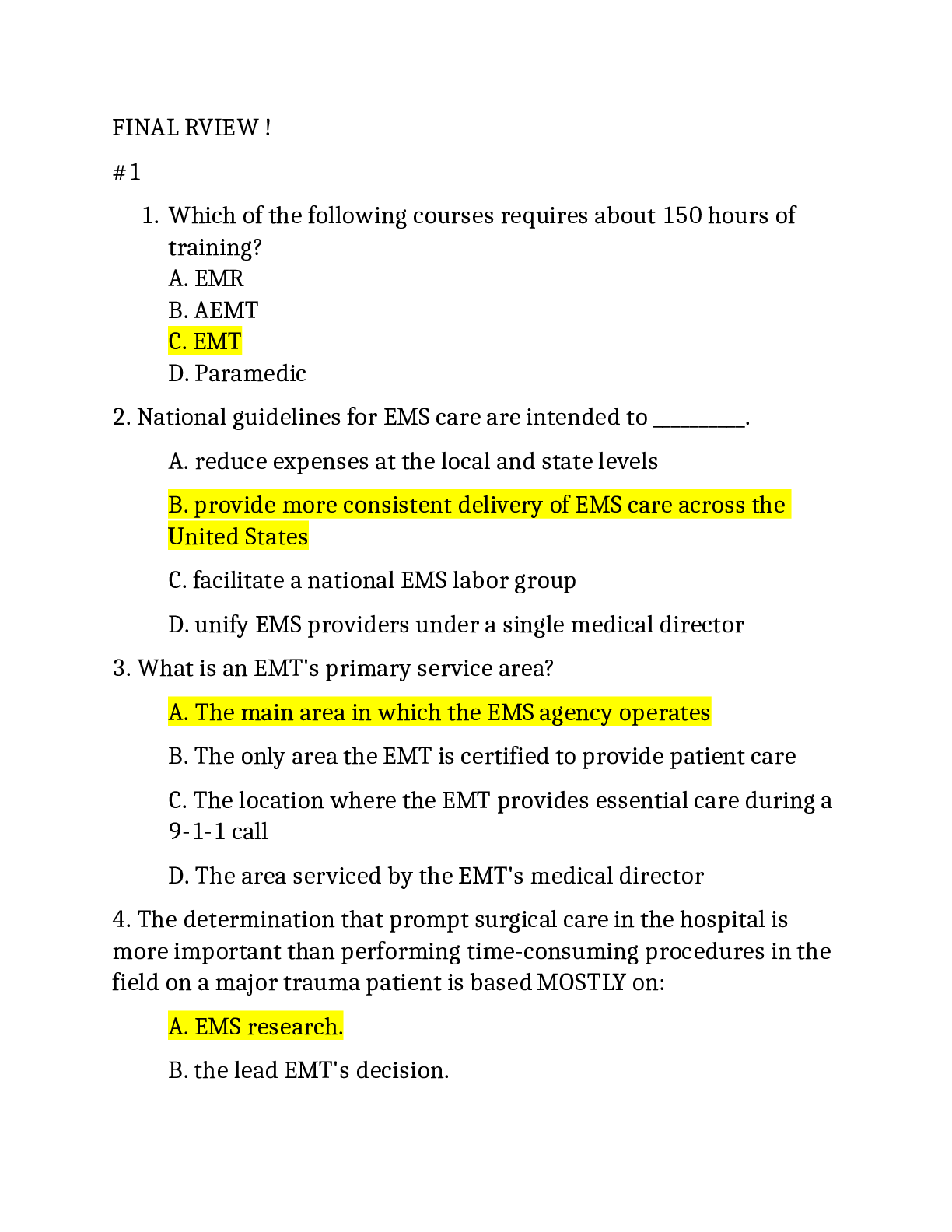


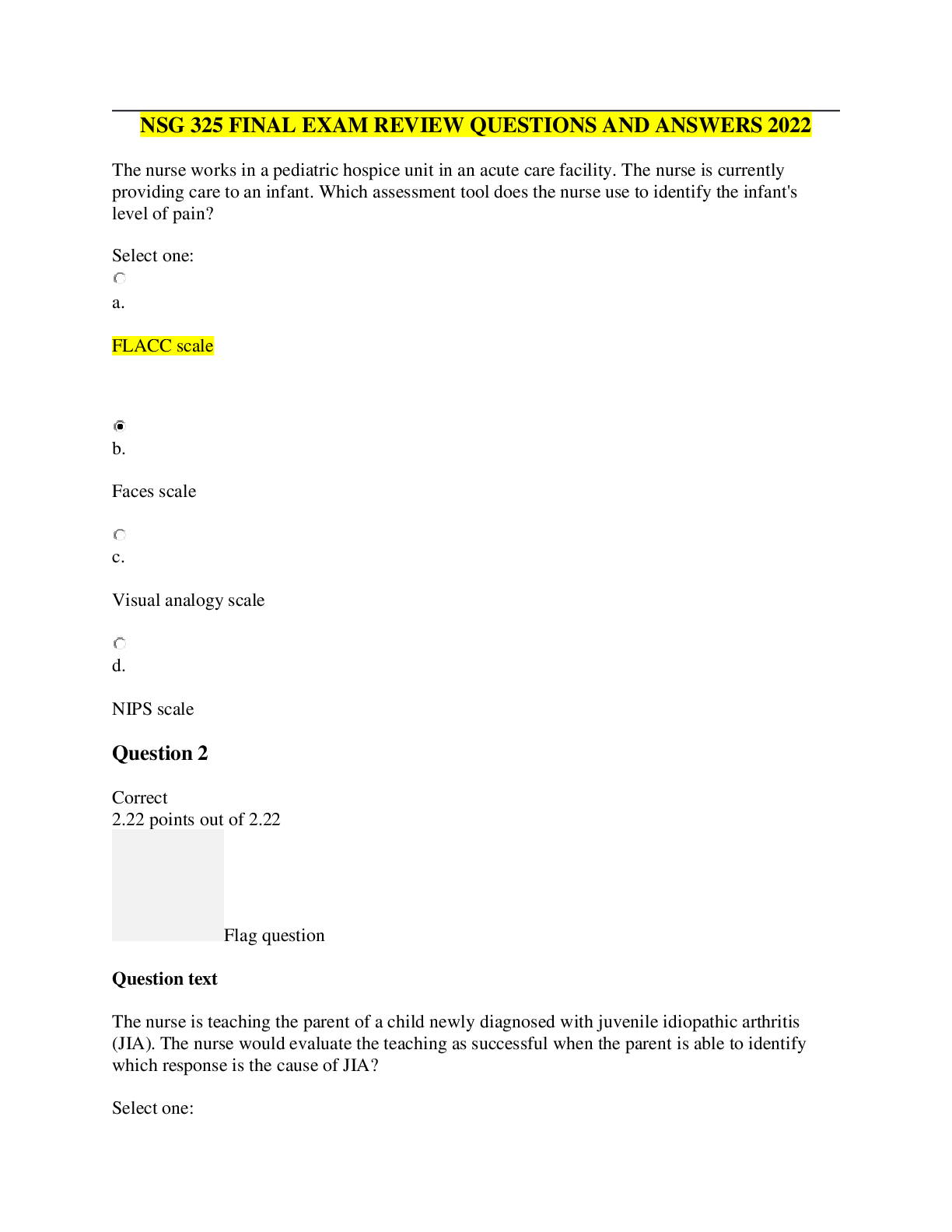
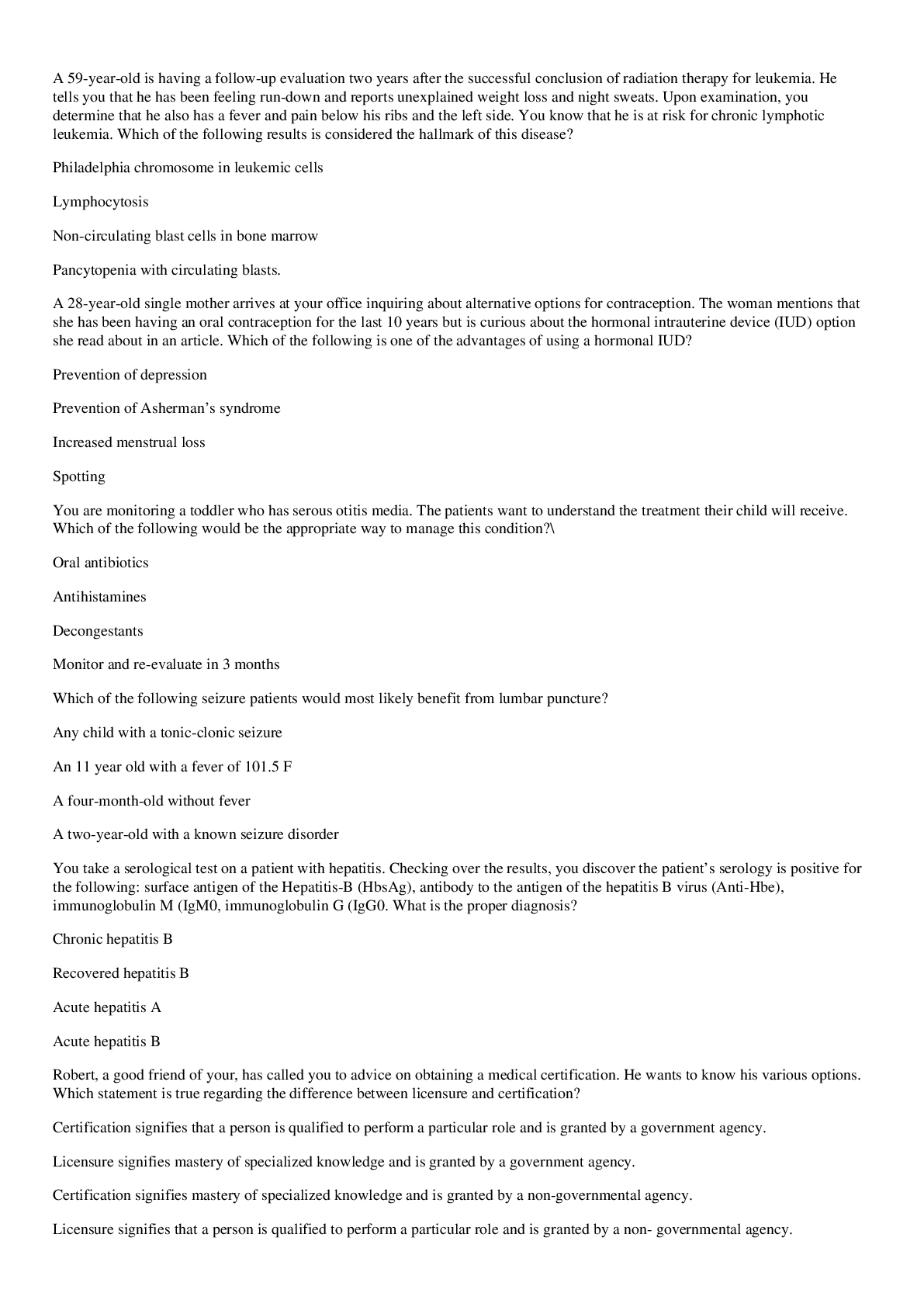
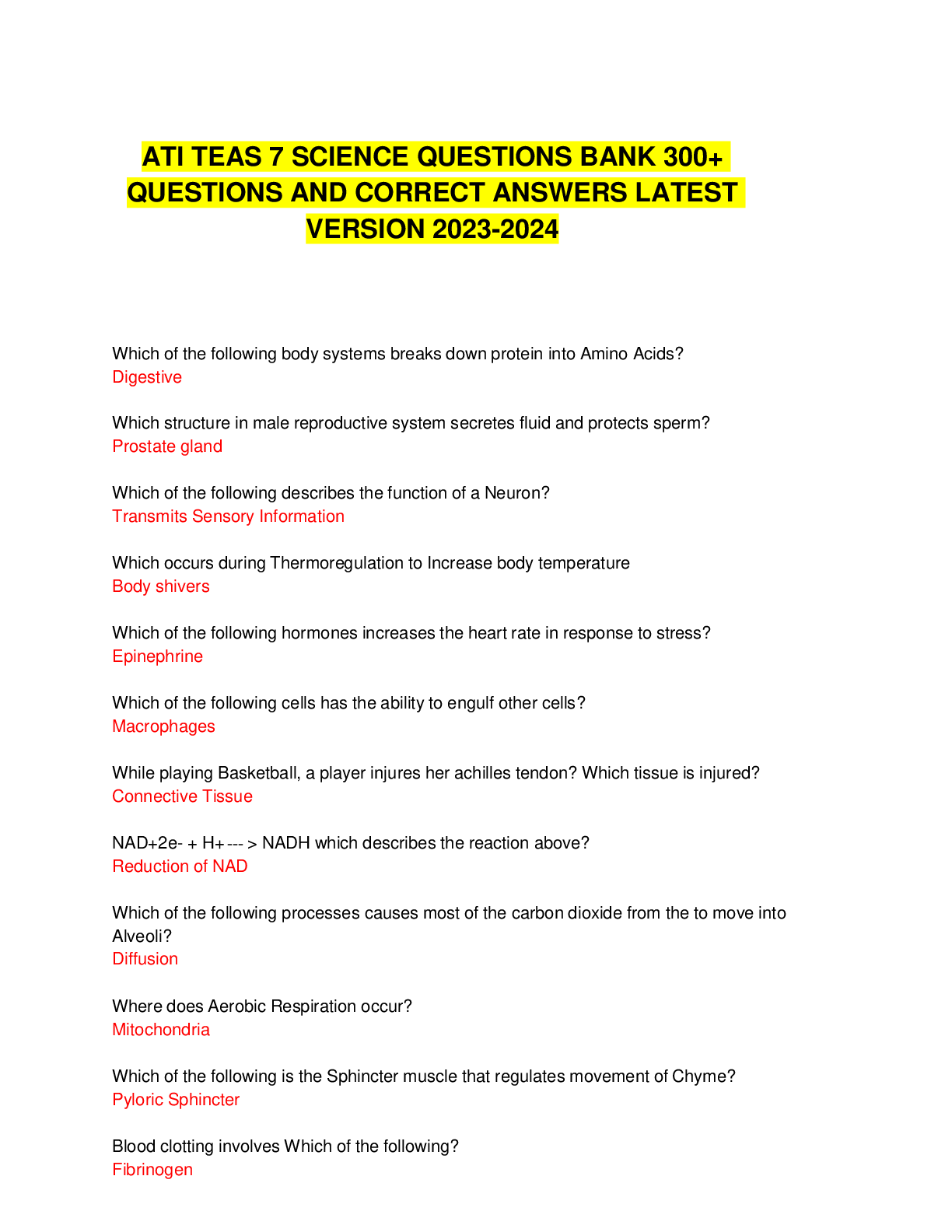
.png)
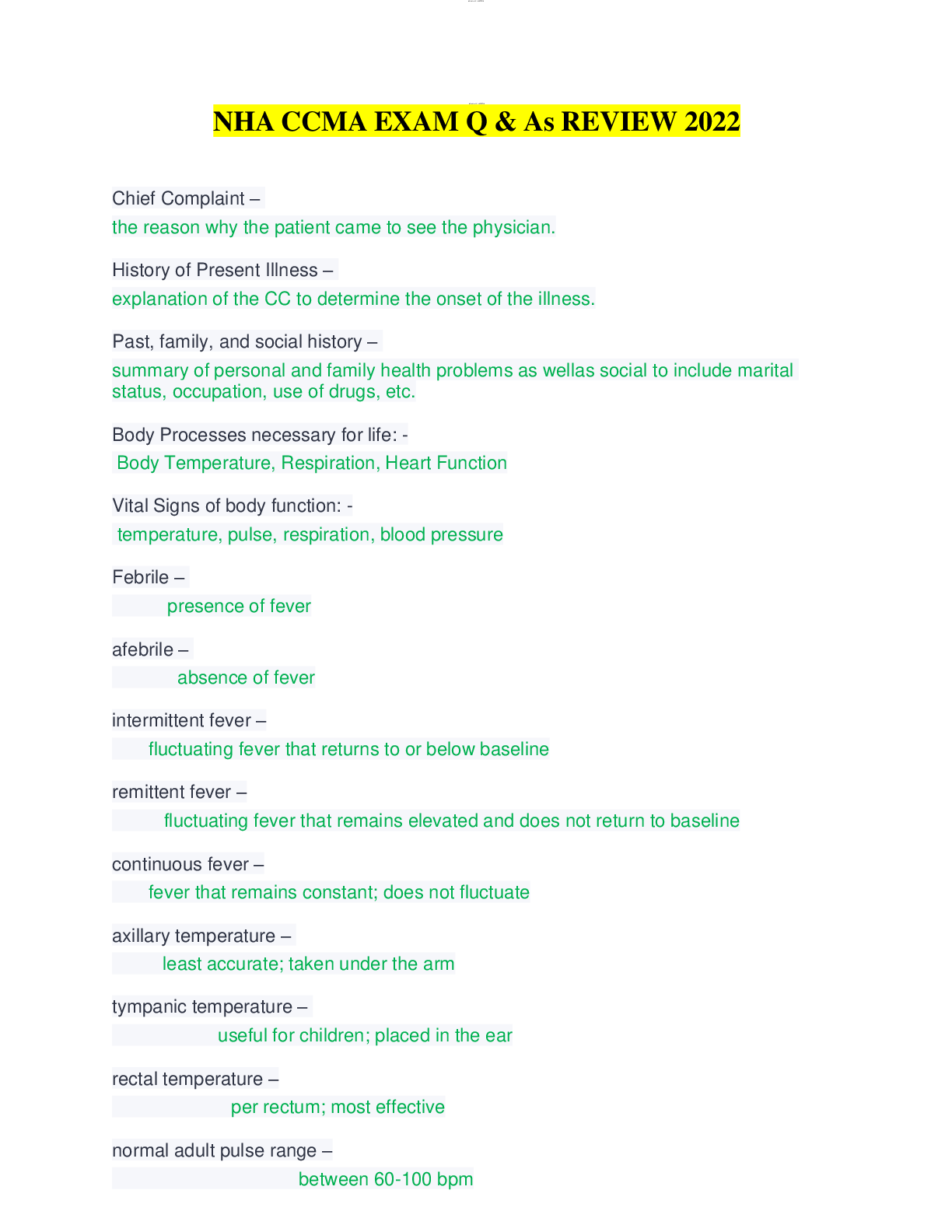

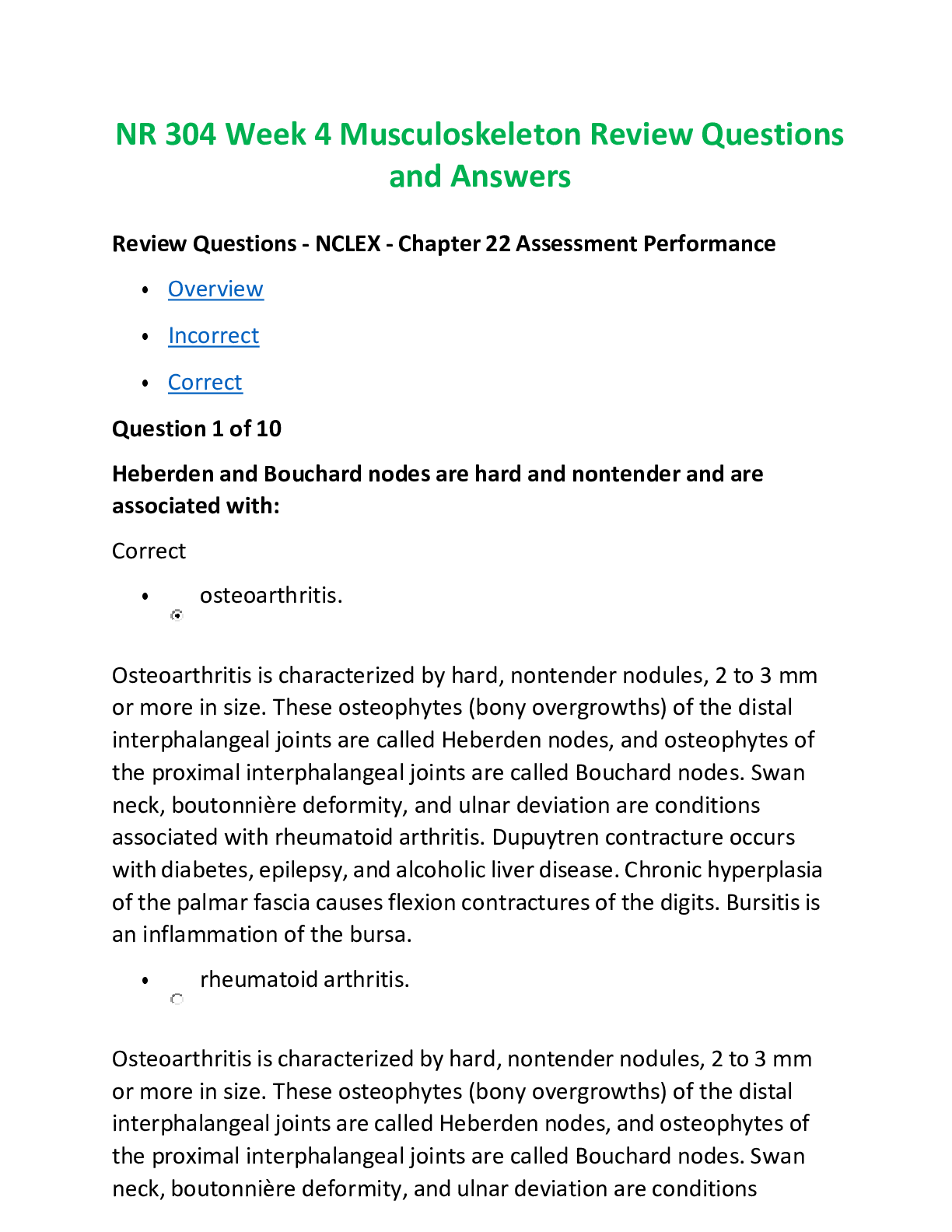

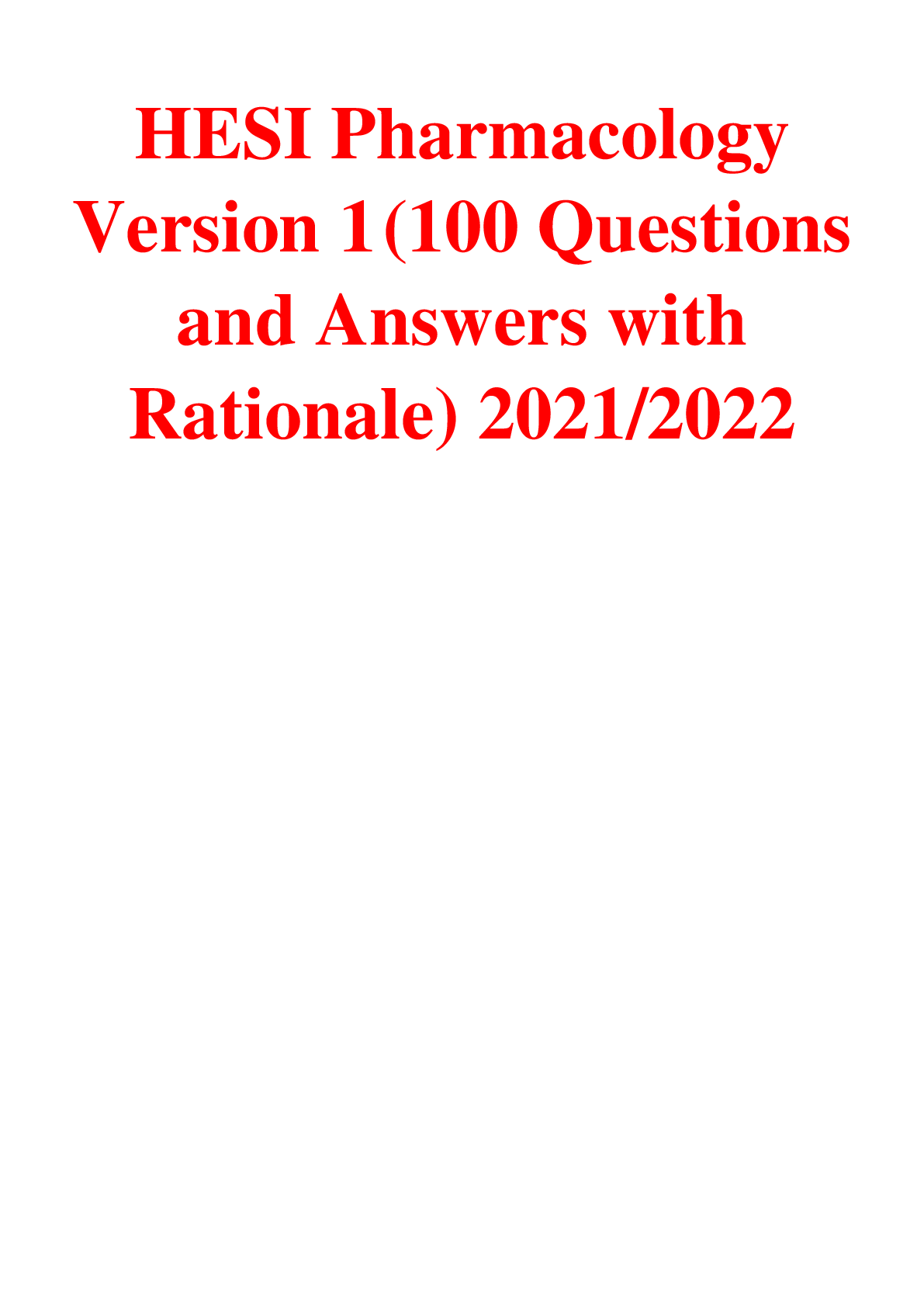
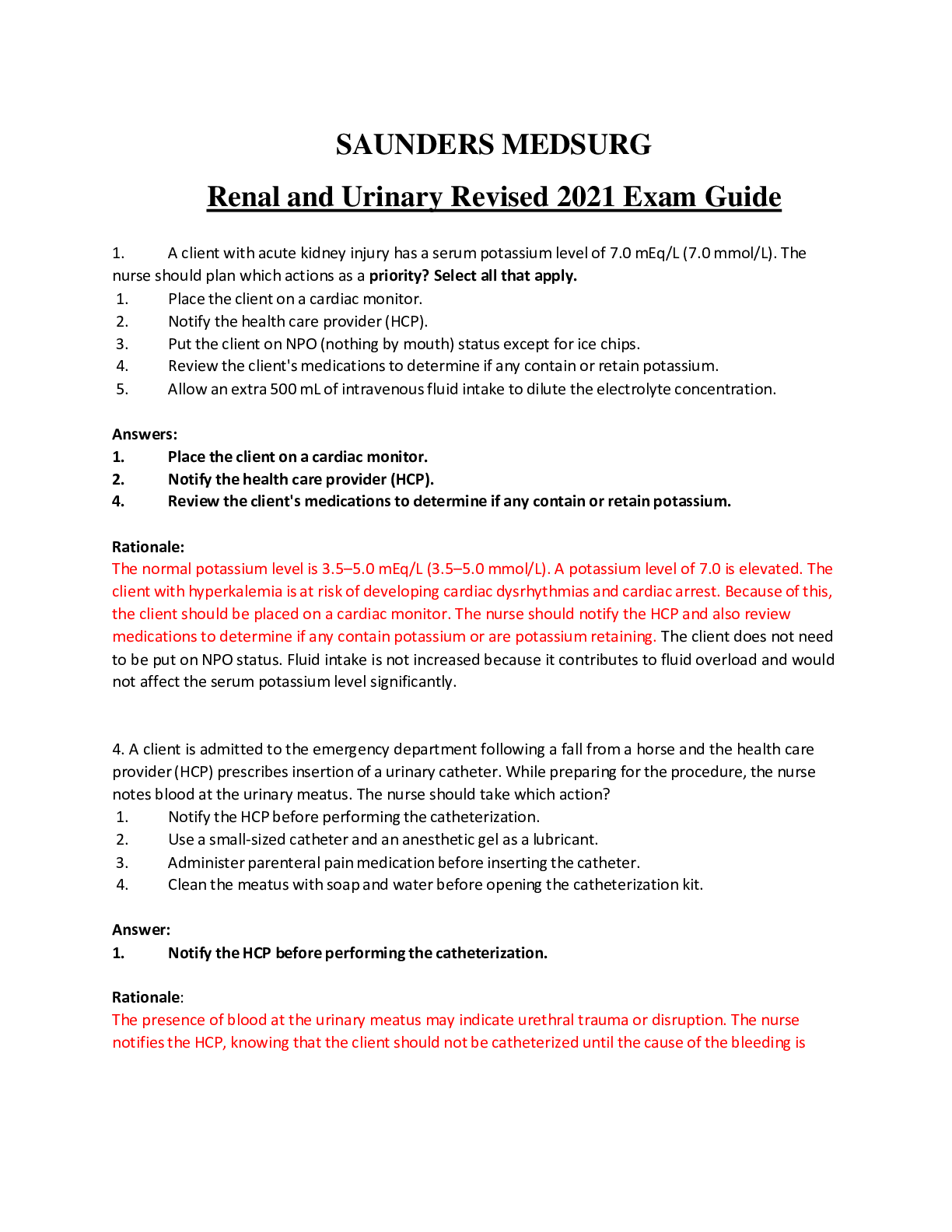

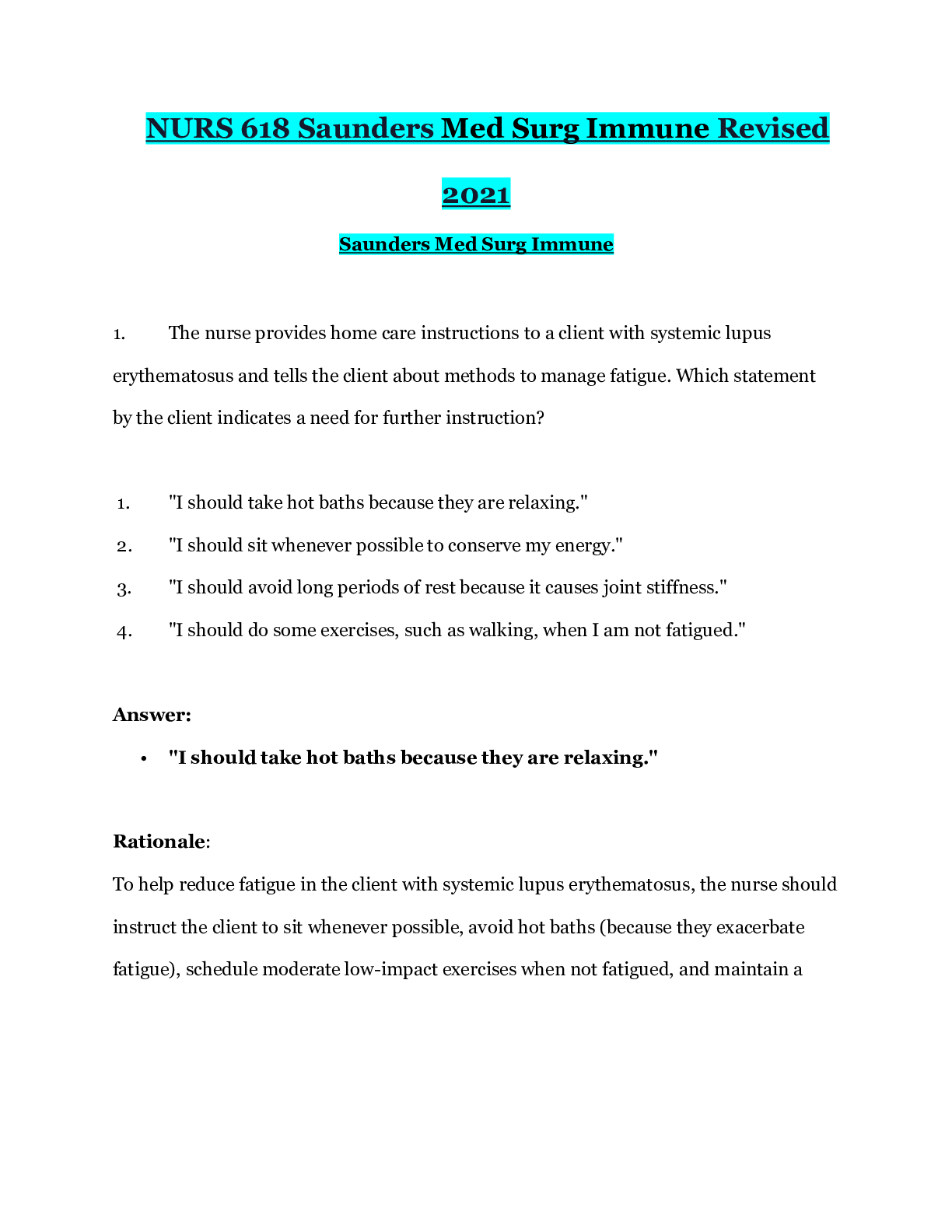
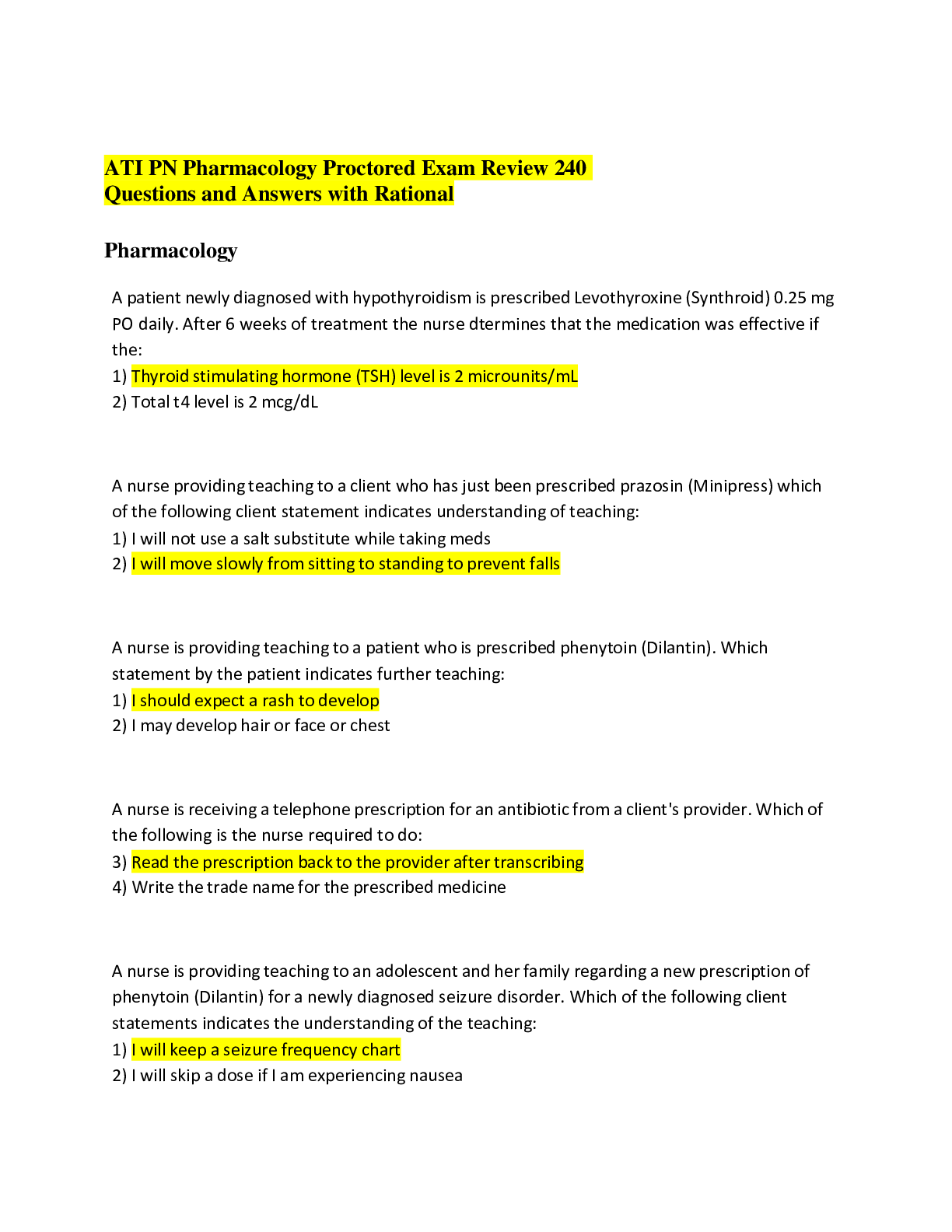
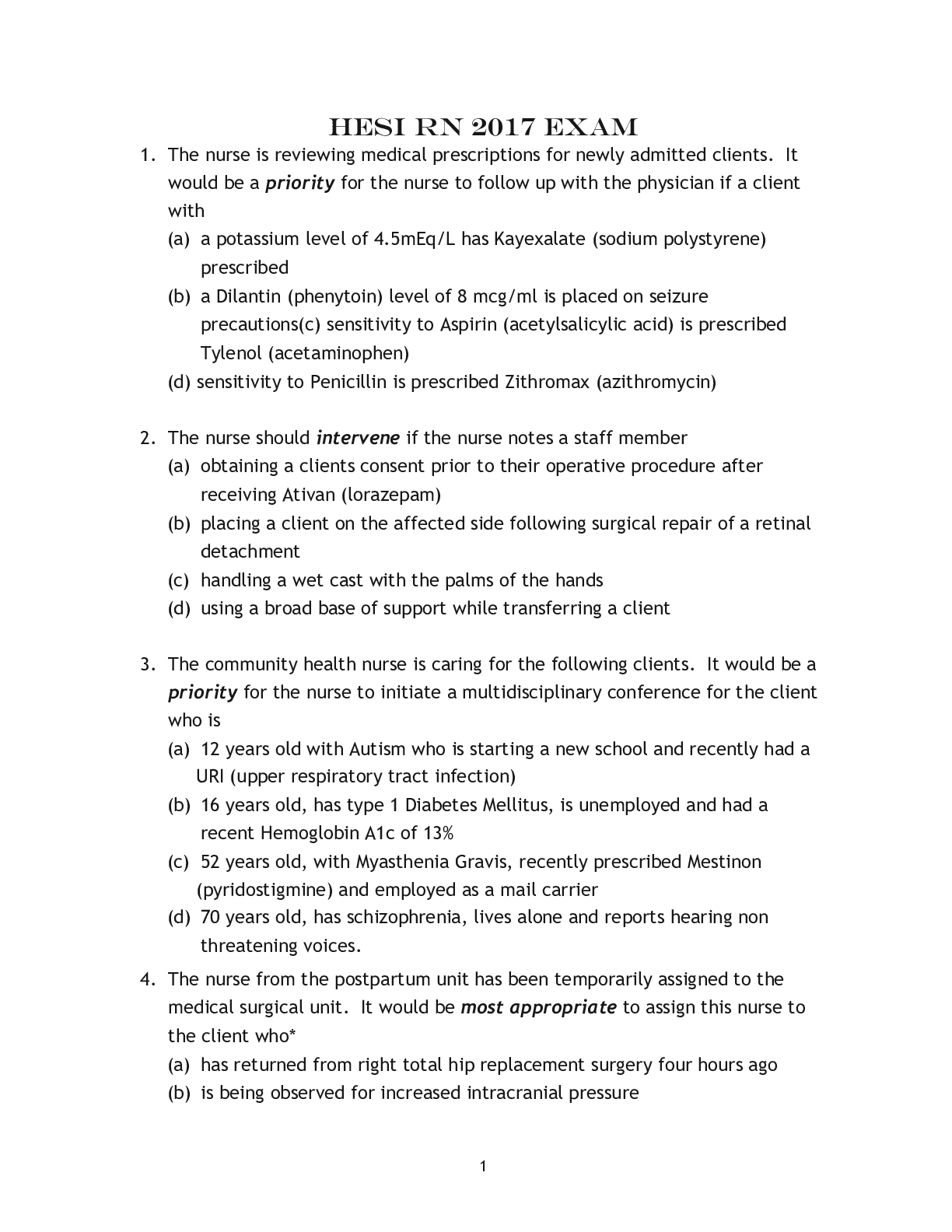


.png)
